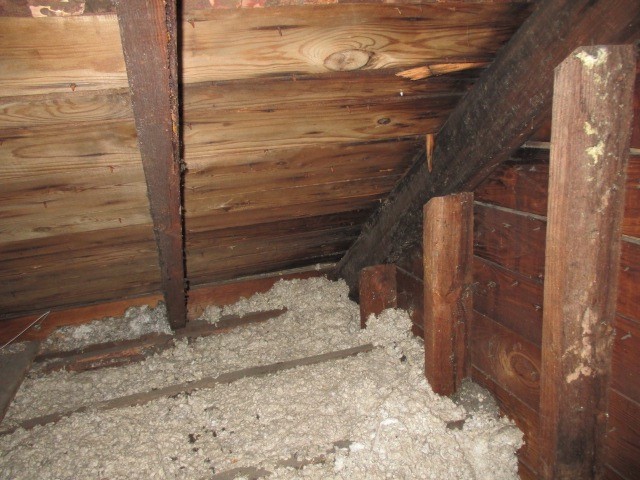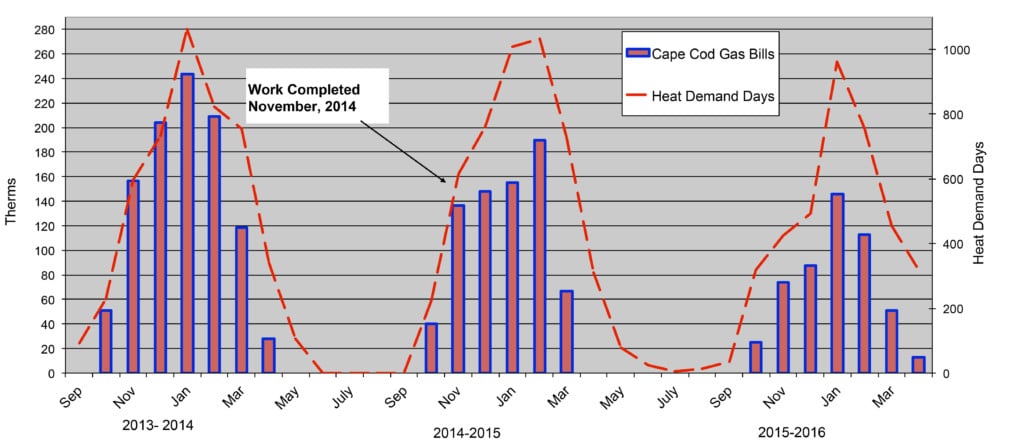Energy Saving Solutions: Home Insulation Case Study

House Type: Cape Cod
Location: Wheaton
The Problem: Big temperature difference between floors & high gas bills in winter
The Impact: With our recommendations, reduced heat usage in the winter by 24% the first year and 36% the second year.
Specific Work Performed
Attic Repairs:
• Sealing penetrations in the attic floor
• Blocking a chase feeding into the house
• Weather-stripping and insulating the attic hatch
• Installing baffles to direct the air from the knee-walls over the insulation
• Adding insulation to the attic floors
Knee-wall Repairs:
• Removal of old insulation that was falling off the roof deck
• Cutting an access hole into one of the knee-wall spaces
• Sealing penetrations in the knee-wall floors
• Blocking between the joists feeding under the 2nd floor bedrooms
• Insulating the knee-wall and installing a radiant barrier
• Weatherstripping and insulating 5 doors going to knee-wall spaces
• Installing baffles to direct the eave vent air into the knee-walls
Crawlspace insulation:
• Sealing penetrations going from the crawlspace to the house
• Sealing the rim-band-joist
• Adding insulation and a radiant barrier to the crawlspace ceiling

Their Heating bills were reduced by 25% in the first winter and 39% in the second winter


Heating degree day (HDD) is a measurement designed to measure the demand for energy needed to heat a building. HDD is derived from measurements of outside air temperature. The heating requirements for a given building at a specific location are considered to be directly proportional to the number of HDD at that location.

